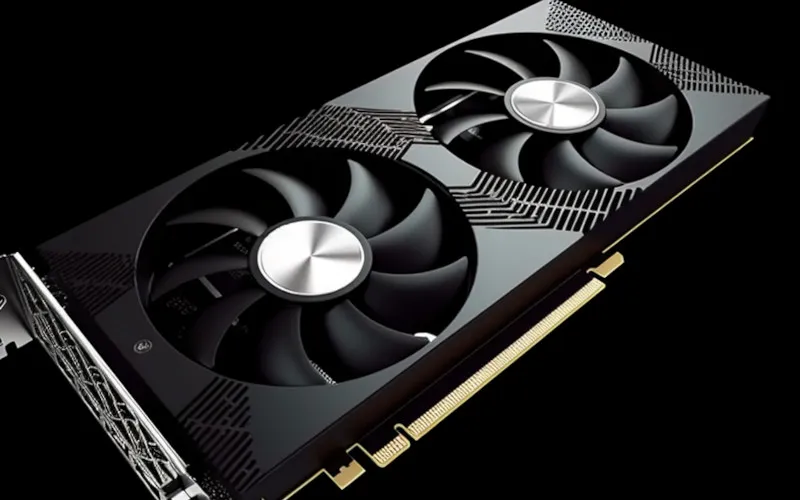Have you ever wondered what makes those stunning graphics on your computer screen possible? Well, thanks to the dynamic duo of graphics driver and graphics card. As a computer enthusiast, I’ve always been fascinated by the intricate workings of these two components and their role in creating a visually immersive experience on our screens.
In this article, we’ll be taking a closer look at graphics driver vs graphics card, and exploring their functions and how they work in tandem to deliver the graphics we see on our computers.
We’ll delve into the importance of having up-to-date graphics drivers and choosing the right graphics card for your needs.
So, buckle up, and let’s dive into the world of graphics technology!
What is a Graphics Driver?
You can think of the graphics driver as the software that bridges your operating system (like Windows or macOS) and your graphics card. It’s like a translator that allows your computer to communicate with your graphics card and tell it how to render images on your screen.
Graphics drivers work by translating your operating system’s instructions into a format your graphics card can understand. They control various aspects of graphics card operation, such as resolution, refresh rate, color settings, and more. Without a graphics driver, your graphics card wouldn’t know how to display anything on your screen.
Keeping your graphics driver up-to-date is crucial for optimal system performance. Newer drivers often come with bug fixes, performance improvements, and support for the latest graphics technologies. Outdated graphics drivers can lead to graphical glitches, reduced performance, and even system crashes.
I’ve personally experienced the frustration of dealing with outdated graphics drivers and the impact it can have on my gaming or multimedia experience. That’s why I always keep my graphics drivers up-to-date to ensure smooth and visually pleasing graphics on my computer.
What is a Graphics Card?
Think of the graphics card as the powerhouse of your computer’s graphics processing. It’s a physical component that plugs into your computer’s motherboard and is responsible for rendering images and videos on your screen.
A graphics card comes with its own processing unit, a Graphics Processing Unit (GPU), designed specifically for handling complex graphics calculations. It can easily render high-quality graphics and handle tasks like gaming, video editing, and 3D modeling.
Graphics cards come in different types, such as integrated and dedicated. Integrated graphics cards are built into the CPU and share system memory, while dedicated graphics cards have their dedicated memory and are more powerful for graphics-intensive tasks.
When choosing a graphics card, factors include the GPU model, memory capacity, power requirements, and compatibility with your motherboard. Choosing a graphics card that meets your specific needs is essential, whether you’re a casual gamer, a professional video editor, or a graphics designer.
As a gaming enthusiast, I understand the importance of having a powerful graphics card to deliver smooth frame rates and stunning visuals in my favorite games. It’s like having a visual powerhouse that brings my gaming experience to life and makes it truly immersive.
Difference Between Graphics Driver and Graphics Card
Now, let’s dig into the difference between graphics driver and graphics card. Think of them as a dynamic duo that works hand in hand to deliver those jaw-dropping graphics on your computer screen.
The graphics driver and graphics card are interdependent. The graphics driver acts as the software that communicates with the graphics card, telling it how to render images based on the instructions from your operating system.
On the other hand, with its powerful GPU, the graphics card does the heavy lifting of processing the graphics calculations and rendering them on your screen.
The graphics driver and graphics card must work together seamlessly to ensure smooth and visually pleasing graphics performance. An outdated graphics driver might not be compatible with a newer graphics card’s latest features and optimizations, leading to reduced performance or even graphical glitches.
Similarly, a high-end graphics card may not deliver its full potential if the graphics driver is not configured correctly or up-to-date.
I’ve experienced the frustration of dealing with compatibility issues between my graphics driver and graphics card, which resulted in graphical artifacts and performance hiccups in my games or multimedia applications.
That’s why it’s crucial to ensure that both my graphics driver and graphics card are up-to-date and compatible with unleashing the full power of my graphics hardware and enjoying a smooth and immersive graphics experience on my computer.
Conclusion
Understanding the relationship between graphics driver and graphics card is essential for achieving optimal graphics performance on your computer. The graphics driver acts as the software that allows your operating system to communicate with your graphics card. In contrast, the graphics card with its GPU is responsible for rendering images and videos on your screen.
The graphics driver and graphics card must work together harmoniously to deliver smooth and visually pleasing graphics performance. Keeping your graphics driver up-to-date and choosing the right graphics card ensures a seamless graphics experience.
As a graphics enthusiast, I’ve come to appreciate the importance of having a well-matched graphics driver and graphics card to unlock the full potential of my graphics hardware.
So, whether you’re a gamer, a multimedia creator, or just a regular computer user, keep your graphics driver updated and choose the right graphics card to enjoy stunning graphics on your computer screen!






